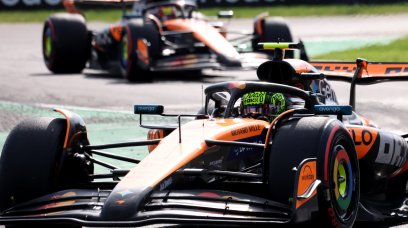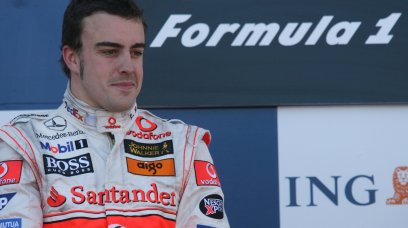Lewis Hamilton will start Saturday's Sprint Qualifying race from the very back of the grid, or possibly even the pit lane, as a result of the stewards finding that the rear wing he used for Friday's qualifying session broke the rules regarding the operation of the Drag Reduction System (DRS) . Hamilton was summoned for an alleged breach of the Technical Regulations when the FIA's F1 Technical Delegate, Jo Bauer, referred the matter to the stewards after standard post-session scrutineering at Interlagos on Friday evening. Two hearings were held, with an initial one between the stewards and Mercedes on Friday evening, and a second one on Saturday morning. The issue was complicated by an investigation into Max Verstappen, who was seen touching the Mercedes rear wing in parc ferme after qualifying - this situation has since been resolved separately after being found to have had no impact on Hamilton's wing. With the technical investigation into Hamilton's rear wing now complete, the full findings of the stewards verdict can be revealed. The stewards confirmed that the testing of Hamilton's DRS slot, done using an 85mm gauge, was carried out on four occasions with two separate gauges. This was done in the presence of the stewards and Mercedes representatives. The Friday hearing was held with the FIA's Jo Bauer and Nicholas Tombaszis, along with Mercedes represented by Ron Meadows and Simon Cole. The Saturday hearing was further attended by Mercedes' Chief Designer, John Owen, with Bauer absent from that hearing. "The competitor [Mercedes] asserted that the design is intended to meet the regulations," read the verdict from the stewards. "It was clear to the stewards that the additional deflection was due to additional play either in the DRS actuator or the pivots at the end, or some combination or other fault with the mechanism, or incorrect assembly of the parts." The design has been tested regularly during the season, without incident, and the FIA clarified that the design meets the intent of the regulations and that there is no doubt that this particular failure indicated any intent to exceed the maximum limit, either by action or design. "[Mercedes] alleged that the fact that the car passed the test in the centre section of the wing is both a mitigating factor and shows that there was no intent to breach the regulation," continued the stewards' document. "While the stewards accept that the latter point may be true, the stewards believe that which sections failed is not relevant to the fact that the wing did fail the test. [Mercedes] noted that this is not a systemic breach, and is indeed unique. It was, rather, something gone wrong. They further noted that they would have liked to have had the opportunity to inspect the parts with a view to having some explanation for the stewards as to how the problem arose. "However, the stewards fundamentally accept [Mercedes'] explanation that the cause of the failed test was something 'gone wrong' rather than a deliberate action. The stewards, therefore, chose to keep the assembly under seal and preserve the evidence of the failure, rather than altering the parts in an inspection which would have involved some handling of the parts and thus some alteration of the evidence."
Were there mitigating circumstances?
Mercedes also made the plea that it is usual practice for the FIA Technical Department to allow teams to fix minor problems that they find with their cars, even in parc ferme conditions. "Had [Mercedes] recognised this problem during qualifying they surely would have sought, and the FIA Technical Department confirmed, they would have received permission to fix the parts or tighten bolts if needed," explained the stewards. "The stewards were sympathetic to this argument and analysed whether they felt this was a mitigating circumstance. It is often a mitigating circumstance to make allowances for crash damage. "However, the stewards could not extend this argument to cover parts that were found out of conformity in post-session checks with no obvious reason in evidence other than considering normal running at this event. "In the end, the regulations are clear and at the moment of the conformity check, the car did not comply."
What was Verstappen's role in all of this?
With Verstappen investigated for a breach of the International Sporting Code for touching the Mercedes rear wing in parc ferme, he has simply been given a fine . In their conclusions, the stewards explained that Mercedes had also agreed that Verstappen's touch was unlikely to have contributed to their car breaching the Technical Regulations. "The stewards, however, were fully satisfied, having extensively reviewed the totality of the evidence regarding that incident, that it has no bearing on this case," they noted. "Finally, therefore, the stewards decide that car 44 [Lewis Hamilton] failed the test and is therefore in breach of Art 3.6.3 of the FIA Formula 1 Technical Regulations. "The stewards agree with [Mercedes] that this is something gone wrong, rather than an intentional act or design but did not find there to be mitigating circumstances. "Further, Art 1.3.3 of the International Sporting Code states that 'it shall be no defence to claim that no performance advantage was obtained.'" Mercedes do have the right to appeal the stewards' decision but, at the time of writing, Hamilton is set to start the Sprint Qualifying race from the very back of the grid.
Most read









